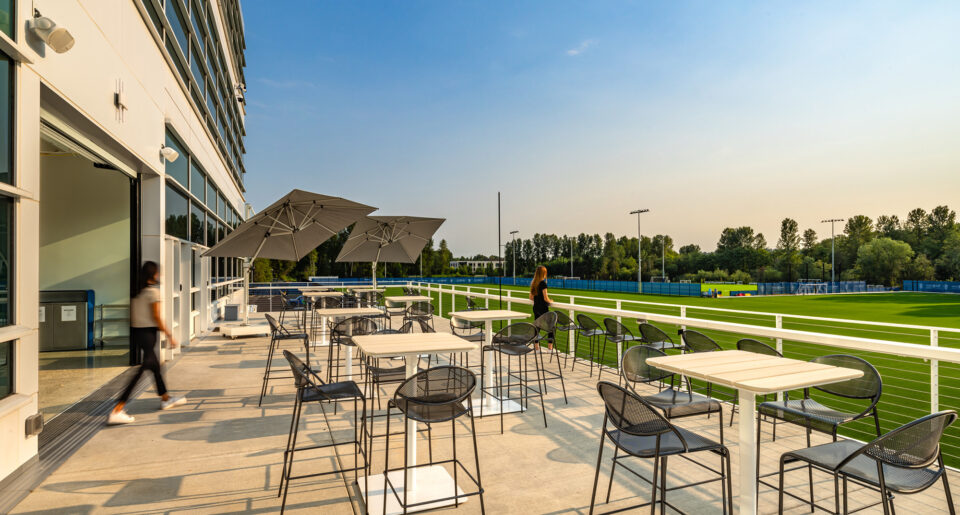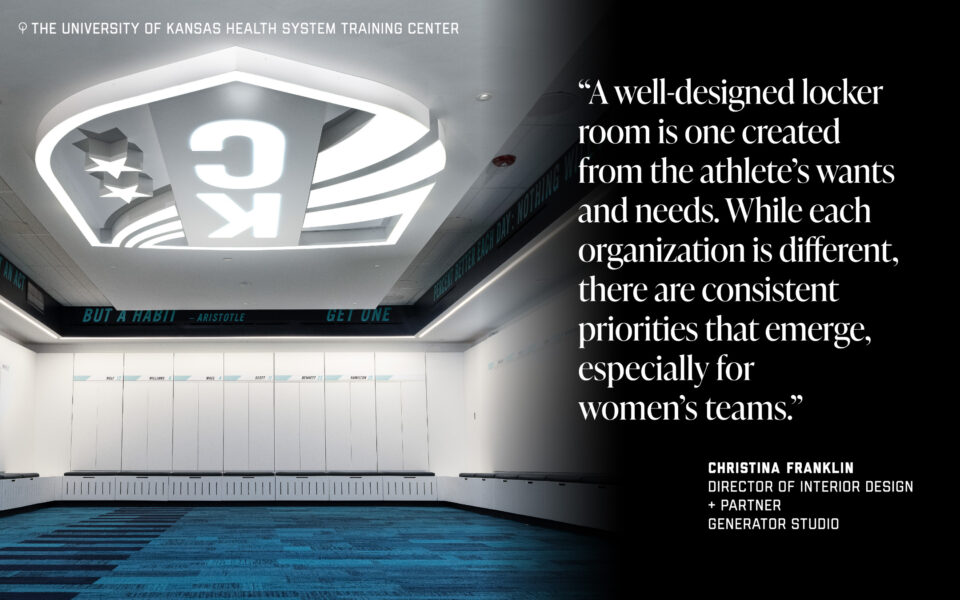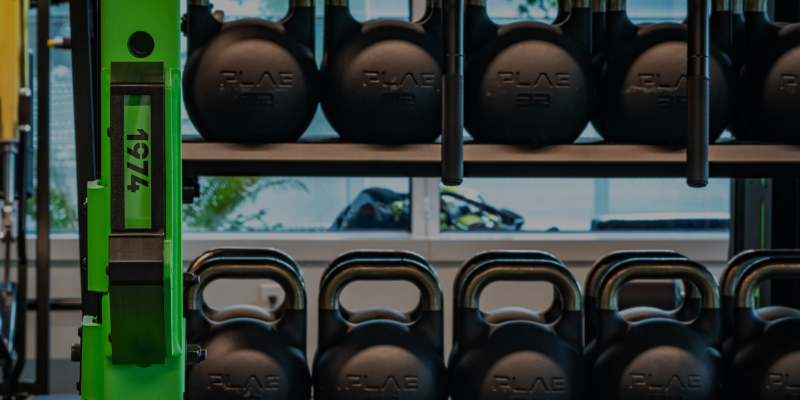Marked by a rise in salary caps, skyrocketing media rights deals, and an influx of investments into both established and emerging leagues, the landscape of professional sports is undergoing a transformative shift. As part of this transformation, professional sports organizations are investing heavily in training facilities designed to cater to the diverse needs of their athletes.
From high-tech recovery rooms to luxury lounges, these spaces are more than just places to practice—they’re essential in fostering athlete well-being, improving performance, and enhancing the overall player experience. With more than $31.4 billion in new and renovated sports facilities slated to open from 2025 onwards, according to Sports Business Journal, the design and function of these spaces are set to become a key driver of success for teams and athletes alike.
With player-first facilities, the specific needs of athletes can be addressed upfront in the programming and layout. Depending on an athlete’s physical needs, gender, and the sport they compete in, training and recovery can look different, even within the same team. Recovery areas and amenities that provide a high level of care to athletes are an important part of the success of a team and a functional practice facility. The equipment found in these areas can vary greatly depending on the athlete’s needs, from float pods and cryotherapy chambers to cold and hot plunge pools and sleep/light therapy.

Common within training facilities and player performance centers is the alignment with health services in the region. Having a team-specific building for training allows the team another asset for naming rights, which could be of interest to existing or new partners. In 2024, the Sounders’ training facility was named the Providence Swedish Performance Center & Clubhouse. As part of their partnership, Providence—the nonprofit health system that’s an existing kit partner of the Sounders—provides physicians from Providence Swedish to serve as the club’s team doctors, working alongside the sports medicine staff. On the other hand, when the KC Current partnered with The University of Kansas Health System as the club’s Official Healthcare Provider, the Current’s training facility was named The University of Kansas Health System Training Center.
Beyond physical health, there is a growing emphasis on the mental well-being of professional athletes, with an increasing focus on creating environments that promote psychological wellness.
Player’s Lounge: Spaces dedicated to team connection are more than just amenities—they’re strategic investments in athlete well-being and team performance. Whether it’s a casual ping-pong table tucked into a locker room alcove or a fully designed players’ lounge with soft seating, gaming consoles, and communal zones, these environments foster camaraderie, decompress stress, and build trust.
Intentional design of these shared spaces encourages organic interaction and strengthens the social fabric of a team. When athletes have places to unwind, connect, and be themselves off the field, it often translates to more cohesive, resilient performance on the field.
High-performing teams are built on relationships, and these spaces provide the backdrop for those bonds to form and thrive.
Outdoor Areas: Multiple studies have shown that regular access to green spaces has been linked to lower risks of depression and improved concentration and attention. Training facilities can implement connections to outdoor spaces through rolling doors, glazing, decks, and private player patios.

Nutrition: From answering micronutrient needs to navigating different athletes’ food allergies and dietary restrictions, gourmet meals and food accessibility are imperative in today’s training centers. In addition to optimal kitchen space for in-house chefs, grab-and-go stations for supplemental nutrition in high-traffic areas can also benefit athletes who may not have the time to enjoy a sit-down meal.
Safety: Athlete and staff safety and privacy must be non-negotiable priorities in the design of any professional training facility. Secure, controlled-access parking and discreet private entries are essential components for not only protection but for creating a seamless, stress-free experience from arrival to departure.
These features ensure athletes can move confidently and efficiently through their daily routines without unnecessary distractions or exposure. In high-performance environments, every detail matters, and secure access is foundational to a facility that respects and supports its athletes at the highest level.
Natural Light and Views: In the past, training facilities often existed in basements or along the interior corridors of larger buildings. Being intentional about daylight, views, and ventilation can be extremely beneficial to athletes and their well-being.
Providing More for Its Users
A modern training facility should do more than support performance—it should serve the complete ecosystem of a sports organization. Beyond fields, courts, and weight rooms, these environments can be programmed to support athletes as professionals, parents, and people.
With thoughtful space planning, facilities can integrate private offices for front office and medical staff, media-ready interview zones, or quiet nursing and play rooms for working parents, acknowledging that elite athletes are often juggling multiple roles. Separate locker rooms and showers for youth or academy players not only meet league requirements but also create access and opportunity for the next generation of talent.
To meet the needs of an athlete, you must first understand the needs of a human being. Sometimes that means right-sized lockers with secure, personal storage alcoves. Sometimes it’s an in-house barbershop, giving athletes a way to maintain their routine and confidence during demanding seasons. For others, it’s about enhancing what already exists. During Generator Studio’s renovation of the New York Liberty’s team suite, the wet area was reimagined with added outlets and storage for styling tools, extended counters for grooming, and a custom sliding door to increase privacy from media during post-game interviews.

Training centers also have the potential to extend value to the business and community. The Providence Swedish Performance Center & Clubhouse in Seattle, for example, was designed with a flexible atrium to host the club’s RAVE Green Gala in 2024, and the deck that was added now serves as a perk for season ticket holders to watch open training.
“Recruiting is becoming more important, and recruits often make their decision based on athletic facilities,” says Angie. “As a sports architect, we often determine the recruiting trail that a potential athlete will take through the facility and make sure every space along the recruiting trail is well-designed in the team brand.”
As we continue to see the investment grow in professional athletics, especially women’s athletics, so does the ceiling of what’s possible in optimizing athletes’ skills, recovery, and well-being through the built environment. Organizations can work strategically with architects and designers to define their goals and translate them into the programming of new or existing facilities. By designing environments with a foremost focus on athletes’ needs, we can create organizations and teams that thrive physically and emotionally.

